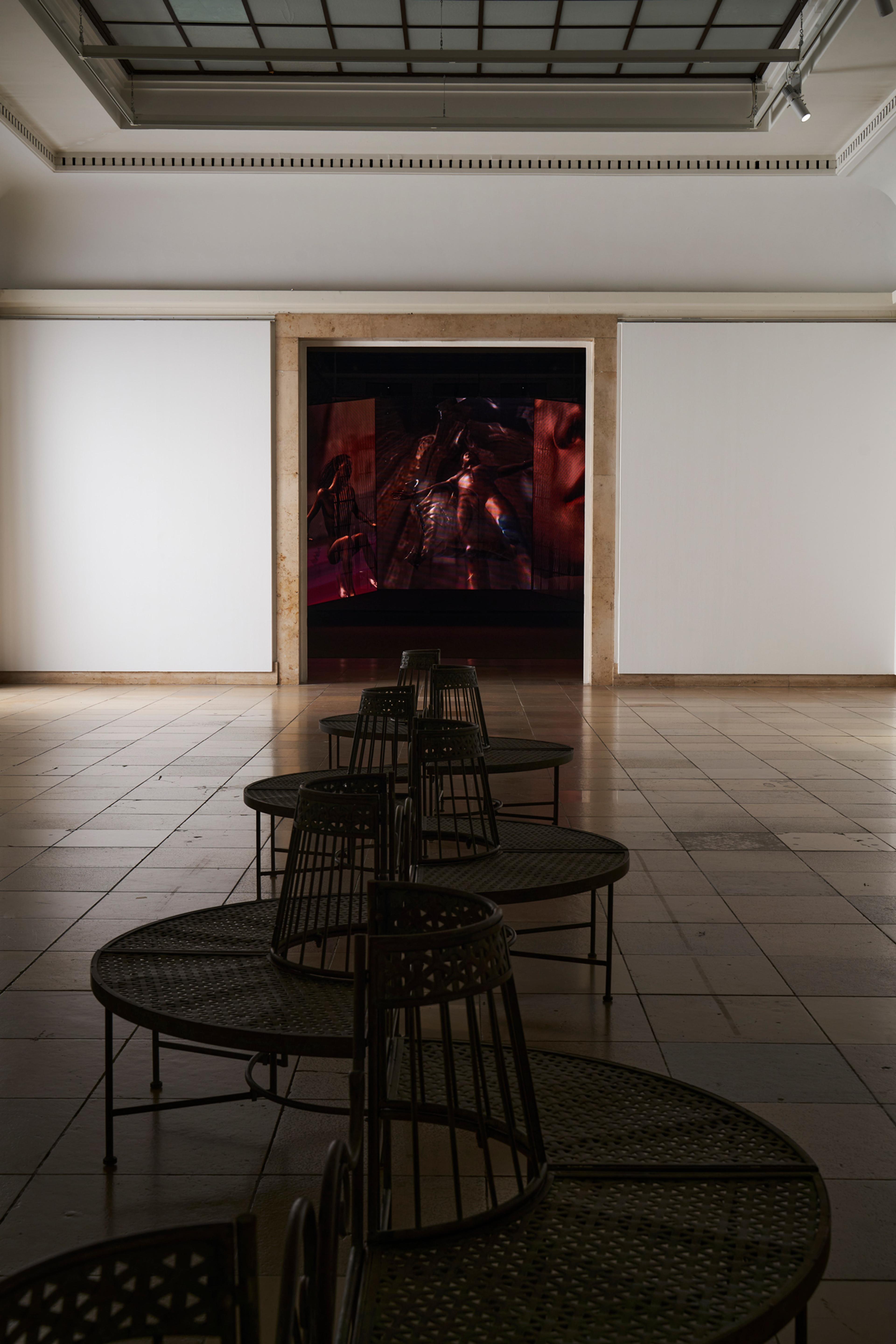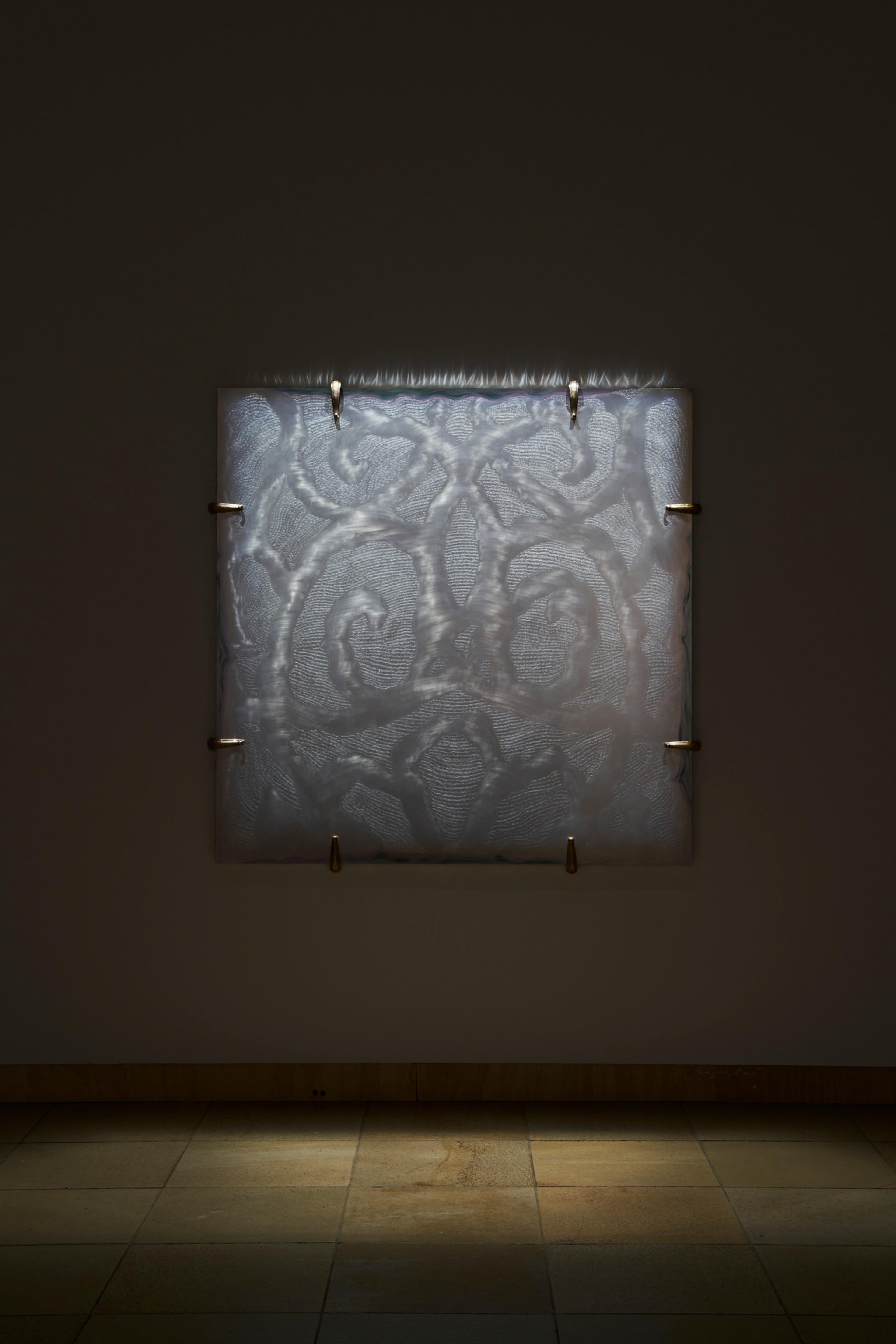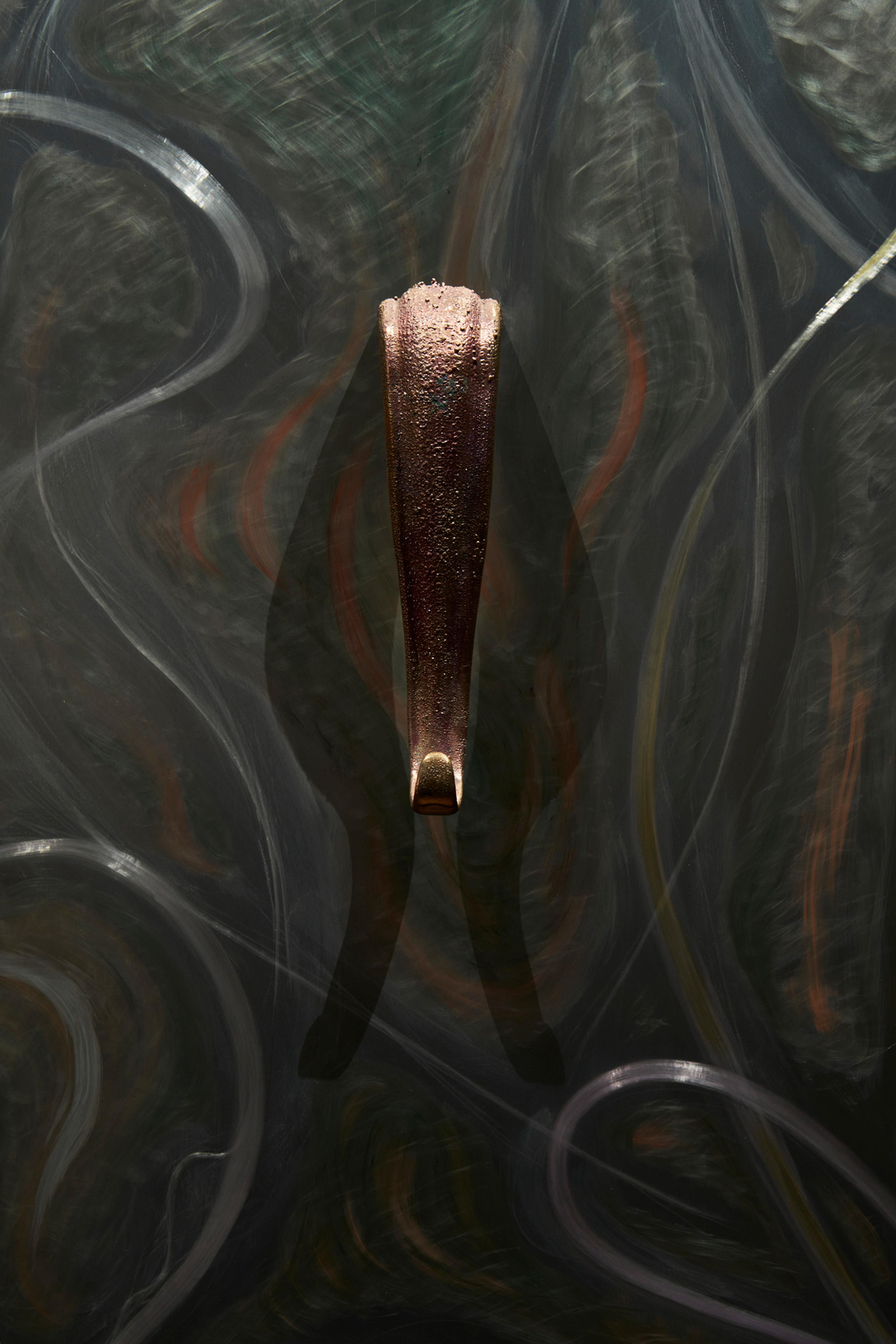Sprinkled with white feathers from Judy Chicago’s Feather Room (1966), from “Inside Other Spaces. Environments by Women Artists 1956–1976,” I head towards WangShui’s (*1986) installation at Haus der Kunst, envisioned in part as a contemporization of the former exhibition’s historic formats. In “Window of Tolerance,” the American artist informs interactivity and immersion with the possibilities of augmented and synesthetic experiences enabled by new forms of collaboration between humans and machines. On the way to the second floor, a metallic tentacle (Rumor I [harmless], all works 2023) is positioned lushly in a stairway corner, its eroded texture echoing an archaeological surface under water. The piece alludes to one of WangShui’s recurring references: the science fiction writer Octavia Butler’s trilogy “Lilith’s Brood” (or “Xenogenesis,” 1987–89) and its Oankali, tentacular extraterrestrials who attempt to save humans from their genetic predisposition to hierarchy and destruction by generating interbreeds (or “constructs”).
The exhibition’s centerpiece, the majestic LED triptych Certainty of the Flesh, attunes to Butler’s proposition of atoning for our deadliest tendencies through commingling, inasmuch as WangShui cooperates with neural net works to “circumvent the ego” and present visual “constructs,” these latter molded by AI from the artist’s own aesthetic genes. The work presents live, simulated scenes in which slender avatars embody one of the Wuxing, or the five phases of traditional Chinese philosophy (water, wood, fire, earth, and metal). They move around sluggishly in a domestic interior like a reality-TV set, complete with large sofa and scattered (flying) pillows. Visitors are invited to dive into the “artificial drama,” sonorized by intelligible voices on looped ambient music, whose choreography and props are based on friends of the artist and a database of television imagery (such as The Bachelor). On the back of the three-paneled structure, a grid of twelve smaller monitors display individual elements of the front’s cadavre exquis and its ever-evolving score.
Certainty of the Flesh (detail), 2023
View of “Window of Tolerance,” Haus der Kunst, Munich, 2023
Pillow IV (amazing taste), 2023, oil on aluminium, cast bronze, 152.5 x 152.2 cm
Cowlick Buzz (detail), 2023
If Certainty of the Flesh is explicit about its foundation in human-machine entanglements, WangShui’s paintings let the viewer wonder longer, the glow of their abstract landscapes enhanced by down-pitched illumination. Beginning with moving-image and installation art, WangShui started developing a pictorial practice during the pandemic at a friend’s house in rural New York, where a permanent working space prompted them to experiment with painting on different surfaces. They gravitated quickly towards the built-in “backlight” of aluminum, which, meshing color with surface scratches, can visually convey oil paint’s “latent space” (a deep-learning term for mathematical representations of complex data by simpler groupings). On the paintings’ surfaces, thin oil strokes of holographic colors activate these abrasions, re-interpreting AI prompts fed with the artist’s own works. Perceived as a liminal landscape between the organic and the synthetic, their paintings reiterate set pieces from Certainty of the Flesh, from champagne flutes in Window of Tolerance to the fabric patterns of Pillow II and Pillow IV (amazing taste). The human figure disappears in their depths, if not in the viewer’s shadows on their reflective surfaces, triggering a twisted mise en abyme. Yet, no regal couple à là Velázquez appears in the empty frame of False Vacuum, as WangShui’s interest, rather than reiterating classical artistic paradigms, is to tackle post-human perception as “an almost structural integration between animal, environmental, human, and machine.”
The VR dystopia summoned by Certainty of the Flesh plays footsie with the surrealism of WangShui’s paintings, offering the viewer different possibilities of interplay with artificial mycelium. If the work is an attempt to transcend the supposed hegemony of human authorship by enabling “independent” composition of live simulations, in WangShui’s paintings, AI enacts a sentient otherness through which the artist can observe themself, before returning to a third thing (the painting) – neither one nor the other, but both at once. Far from being a mere virtuous technological exercise, the show’s presentation of AI “as a cultural metaphor rather than a tool” premises a broader reflection on the means of collaboration between humans and non-human forms of intelligence. Eventually, we may end up “repair[ing] the damages that are inflicted in life,” as Louise Bourgeois said, “to make something that is fragmented – which is what fear and anxiety do to a person – into something whole.”
___
“Window of Tolerance”
Haus der Kunst, Munich
8 Sep 23 – 28 Apr 24






